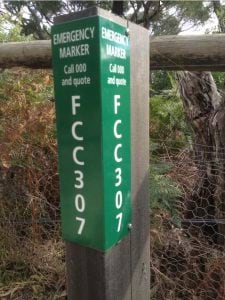What happens when I call triple zero (000) in Victoria?
Always call triple zero (000) in an emergency.
When you first call triple zero (000), you will be asked by Telstra which service you require: police, fire or ambulance.
If you need a translator, state the language you require.
If you have a hearing or speech impairment and life or property is in danger, you can contact police, fire or ambulance by calling the 106 TTY service. For information about relay calls visit the National Relay Service website.
If you are calling from a mobile phone, you will also be asked which state you are calling from. If you are calling from within Victoria, you will be connected to one of Triple Zero Victoria’s emergency communication centres.
The Triple Zero Victoria Call-taker will ask 2 important questions.
1. Where is your emergency?
This is the most important piece of information. It’s important to be as specific as possible. If the emergency is at a house, let the Call-taker know the number of the house, street name and suburb.
The Call-taker will verify the address by asking where the nearest cross street is or by identifying a nearby landmark.
2. What is your emergency?
Listen carefully to the Call-taker and answer their questions so that they can establish what the emergency is and organise the most appropriate help for you.
Stay on the line
As soon as the Triple Zero Victoria Call-taker knows where your emergency is and what the emergency is, they can send you the help you require to the relevant location – whether this be police, fire or ambulance.
The Call-taker will continue to ask you questions once the help has been dispatched. This will help determine if additional emergency resources are required or if a patient requires first aid treatment while waiting for the emergency services to arrive.
These questions do not delay the emergency service response. The additional information you provide will be passed on to the already dispatched emergency services.
Don’t hang up until the Call-taker advises you to do so.
Calling from a mobile phone
If you call from a mobile phone, the triple zero operator will not know where you are or receive a GPS location. You will be asked by Telstra which state you are calling from.
To help callers pinpoint their location in an emergency, we encourage smartphone users to download the Emergency+ app. The app is free of charge and available for download from iTunes, Google Play and Windows stores.
Using emergency markers
Emergency markers are designed to pinpoint your exact location in public open spaces or an area that may otherwise be hard to define.
They are located in public areas such as national parks, cycling tracks, river trails, reserves, gardens and racecourses.
Emergency markers look like a street sign with white text on a green background. Each has a unique alphanumeric code made up of three letters and three numbers. This code is linked to Triple Zero Victoria's computer aided dispatch system (CAD) and specifies the location, GPS coordinates, road access and navigational data. When calling triple zero (000), provide the Call-taker with the alphanumeric code on the Emergency Marker sign. This allows Triple Zero Victoria to quickly dispatch emergency services to get you the help you need.
Find an emergency marker
Want to know where emergency markers are in your area? Visit the QR2idportal and Emergency Marker portal for imagery and data of Victoria's emergency markers.
When to call triple zero
You should call triple zero (000) in an emergency. An emergency is a serious, unexpected and often dangerous situation that requires immediate action. This includes danger to life, health and/or property.
Some examples of an emergency:
- Air, rail or water accidents
- Allergic reaction resulting in difficulty breathing
- Bleeding (severe)
- Breathing difficulty (for example, severe asthma)
- Diabetic low (symptoms include fainting, disorientation or acting strangely)
- Drug overdose
- Drowning
- Electric shock, burns or industrial accident
- Explosion or bomb incident
- Fire that is threatening life or property
- For more information regarding smoke, fire and planned burns in Victoria visit Planned burning in Victoria or the VicEmergency hotline)
- Heart attack (suspected)
- Road accidents (causing serious injury or major traffic problems)
- Stomach pain (severe)
- Stroke (actual or suspected)
- Trapped person(s)
- Trauma (injury)
- Unconscious person
- Violence (such as an assault, brawl, or domestic violence)
Updated


